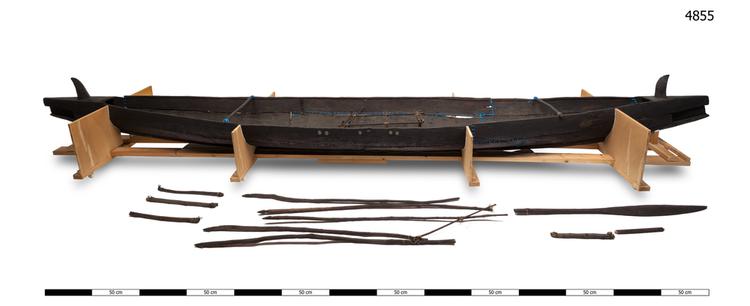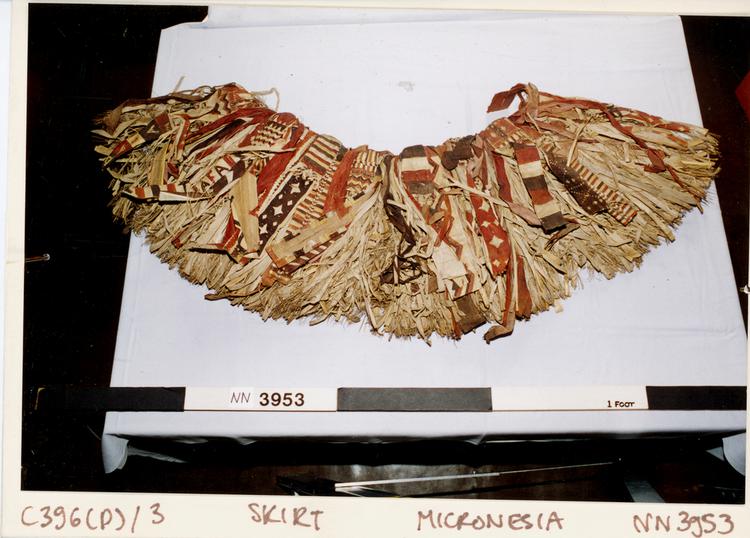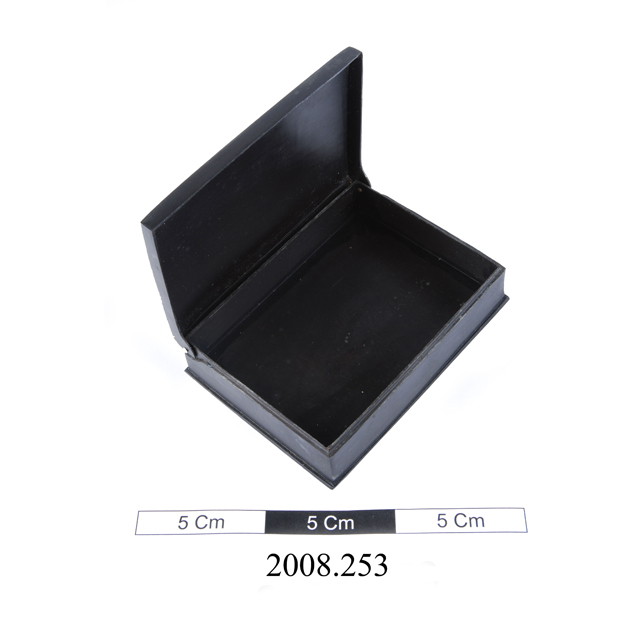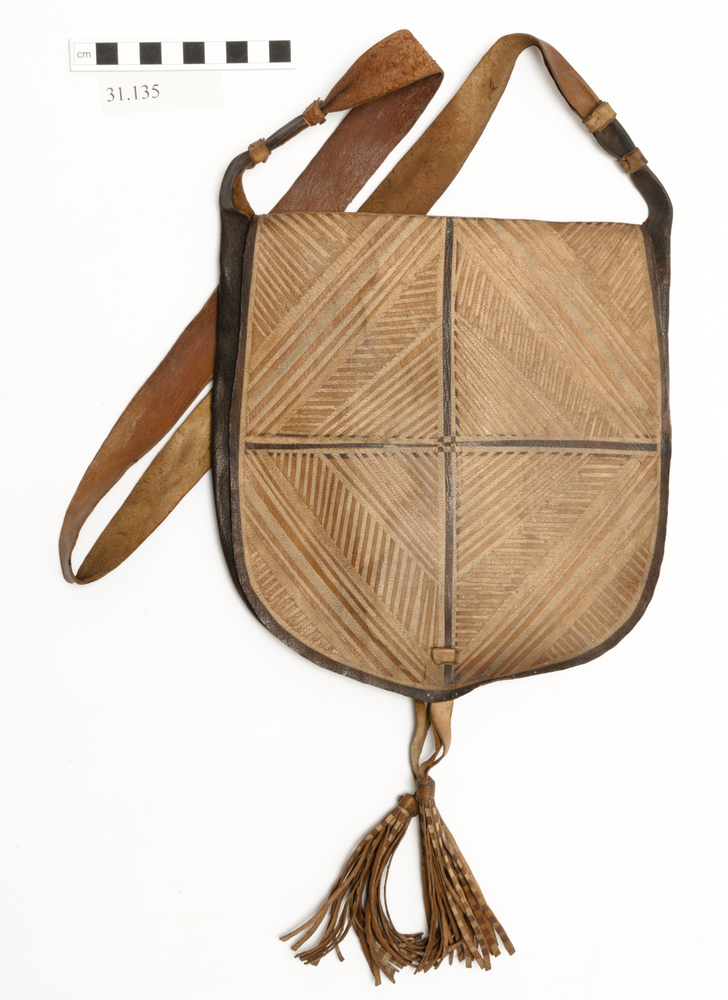
Outrigger canoe with steering paddle, Kiribati, Micronesia. Coconut wood, Pandanus leaf, Coconut fibre. Mid-late 19th century.
Outrigger Canoe with Steering Paddle, Kiribati, Micronesia This 7 metre long canoe with 5 metre long outrigger was carved and constructed in Kiribati in eastern Micronesia during the later 19th Century. It follows the general shape of a dugout canoe cut from a single trunk, but in reality it is constructed from several short, thin planks of coconut wood, none longer than 1.5 metre. The seams of these planks are staggered like brickwork, pierced around their edges and 'sewn' together with running knots of plaited coconut fibre cordage. An interesting construction technique used here was the insertion of Pandanus leaf strips into every seam of the boat. This versatile, durable and flexible leaf was used to make mats, clothing and sails throughout the Pacific, but here we see it used for its water-absorbing qualities: when the boat was put into the water, these Pandanus strips expanded and sealed every joint watertight. The i-Kiribati sailors contemporary with this boat were among the most accomplished the world has ever seen. In boats little bigger, with woven moveable sails, such men undertook voyages over 2000 km across some of the deepest waters in the world. Coconut wood, Pandanus leaf, coconut fibre. Mid-Late 19th Century. Acquired by Frederick Horniman in London before 1898.






